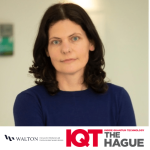Quantum News Briefs: January 23, 2024: New research led by Alice & Bob reduces number of qubits for useful quantum computing with novel approach to error correction; “Magic Trap” Captures Quantum Effects for Longer Time; Jack Hidary, CEO of SandboxAQ, discusses the “Black Swans” of Quantum Technology at the World Economic Forum

Quantum News Briefs: January 23, 2024:
New research led by Alice & Bob reduces number of qubits for useful quantum computing with novel approach to error correction

Alice & Bob, in partnership with Inria, has introduced an advanced quantum error correction architecture, employing low-density parity-check (LDPC) codes on cat qubits, as per their latest announcement. This innovative approach, outlined in a paper on arXiv, significantly improves upon previous LDPC research by enabling gate implementation and short-range connectivity on quantum chips. This new architecture can operate 100 high-fidelity logical qubits with an impressively low error rate, using only 1,500 physical cat qubits. This advancement represents a substantial reduction in hardware requirements for effective quantum computing, as Jean-François Bobier of the Boston Consulting Group acknowledged. Théau Peronnin, CEO of Alice & Bob, highlighted the potential of this technology to run complex algorithms like Shor’s with far fewer qubits than existing methods. This approach makes quantum computing more feasible in terms of time, cost, and energy and aligns with Alice & Bob’s dedication to developing impactful, error-corrected quantum computing. With their recent development of the Helium 1 chip prototype, Alice & Bob are positioning themselves as a significant player in the race to achieve quantum supremacy within the current capabilities of quantum hardware technology.
“Magic Trap” Captures Quantum Effects for Longer Time
In a new study published in Nature Physics, Rice University and Durham University scientists have significantly prolonged quantum coherence, a key aspect of quantum behavior, by nearly 30-fold in an experimental setting. Led by Kaden Hazzard of Rice University and Simon Cornish of Durham University, the team utilized ultracold temperatures and specific laser wavelengths to create a “magic trap,” which delayed the onset of decoherence. In this process, quantum systems lose their quantum properties through interactions with their environment. This experimental success involved cooling molecules to a billion times below room temperature and using microwave radiation to induce quantum rotation, which defies previous limitations where quantum states in rotating molecules lasted only 1/20 of a second. The newly achieved coherence time of 1.5 seconds, much longer than anticipated, opens new possibilities for investigating fundamental questions in quantum matter and advances the potential for quantum technologies in material science, sensing applications, and beyond. This research, part of a collaborative effort that includes theoretical work from Temple University, marks a significant step in understanding and harnessing quantum behaviors for practical applications.
Jack Hidary, CEO of SandboxAQ, discusses the “Black Swans” of Quantum Technology at the World Economic Forum
![]()
In his talk “Quantum’s Black Swan” at the World Economic Forum in Davos, Jack Hidary, CEO of quantum sensor provider SandboxAQ, emphasized the urgent need for quantum-safe systems and post-quantum security. He highlighted the imminent threat posed by quantum computing’s potential to break current public-key encryption systems, which are crucial for the security of banking, e-commerce, and government communications. Hidary compared the development of quantum technologies to digging a tunnel from both ends, with hardware advancements on one side and algorithmic developments on the other. He warned that the number of qubits required to crack RSA encryption is decreasing, accelerating the risk of a critical security breach. Hidary stressed the importance of acting now to transition to new cryptographic protocols, as this process can take years for institutions like banks and governments. His call to action underlines the need for immediate and proactive measures to prevent a potential global crisis in cybersecurity due to quantum advancements.
Kenna Hughes-Castleberry is the Managing Editor at Inside Quantum Technology and the Science Communicator at JILA (a partnership between the University of Colorado Boulder and NIST). Her writing beats include deep tech, quantum computing, and AI. Her work has been featured in Scientific American, Discover Magazine, New Scientist, Ars Technica, and more.



















